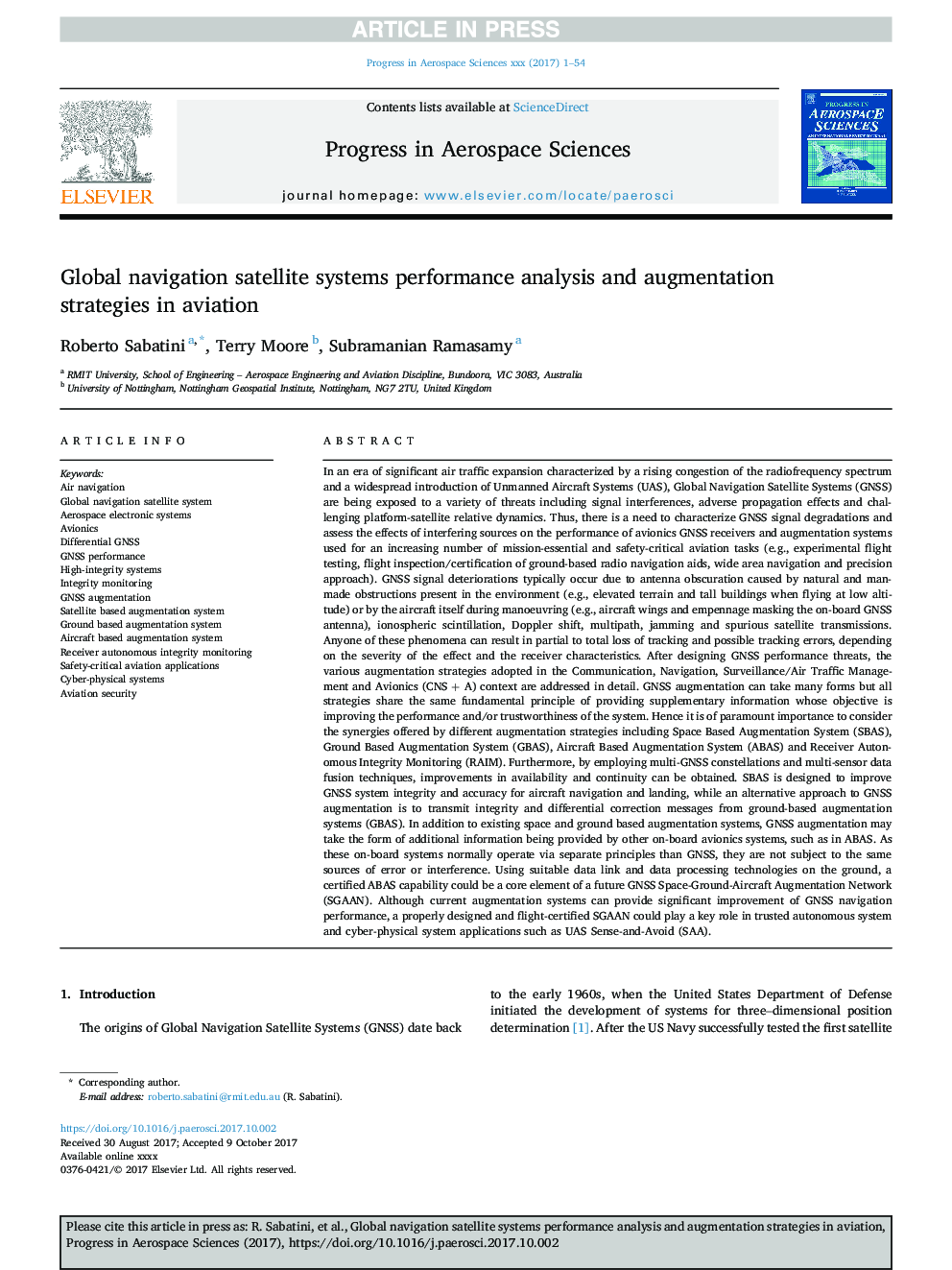| کد مقاله | کد نشریه | سال انتشار | مقاله انگلیسی | نسخه تمام متن |
|---|---|---|---|---|
| 8059094 | 1520141 | 2017 | 54 صفحه PDF | دانلود رایگان |
عنوان انگلیسی مقاله ISI
Global navigation satellite systems performance analysis and augmentation strategies in aviation
ترجمه فارسی عنوان
سیستم های ماهواره ای سیستم های ناوبری جهانی تجزیه و تحلیل عملکرد و استراتژی های افزایش در حمل و نقل هوایی
دانلود مقاله + سفارش ترجمه
دانلود مقاله ISI انگلیسی
رایگان برای ایرانیان
کلمات کلیدی
موضوعات مرتبط
مهندسی و علوم پایه
سایر رشته های مهندسی
مهندسی هوافضا
چکیده انگلیسی
In an era of significant air traffic expansion characterized by a rising congestion of the radiofrequency spectrum and a widespread introduction of Unmanned Aircraft Systems (UAS), Global Navigation Satellite Systems (GNSS) are being exposed to a variety of threats including signal interferences, adverse propagation effects and challenging platform-satellite relative dynamics. Thus, there is a need to characterize GNSS signal degradations and assess the effects of interfering sources on the performance of avionics GNSS receivers and augmentation systems used for an increasing number of mission-essential and safety-critical aviation tasks (e.g., experimental flight testing, flight inspection/certification of ground-based radio navigation aids, wide area navigation and precision approach). GNSS signal deteriorations typically occur due to antenna obscuration caused by natural and man-made obstructions present in the environment (e.g., elevated terrain and tall buildings when flying at low altitude) or by the aircraft itself during manoeuvring (e.g., aircraft wings and empennage masking the on-board GNSS antenna), ionospheric scintillation, Doppler shift, multipath, jamming and spurious satellite transmissions. Anyone of these phenomena can result in partial to total loss of tracking and possible tracking errors, depending on the severity of the effect and the receiver characteristics. After designing GNSS performance threats, the various augmentation strategies adopted in the Communication, Navigation, Surveillance/Air Traffic Management and Avionics (CNSÂ +Â A) context are addressed in detail. GNSS augmentation can take many forms but all strategies share the same fundamental principle of providing supplementary information whose objective is improving the performance and/or trustworthiness of the system. Hence it is of paramount importance to consider the synergies offered by different augmentation strategies including Space Based Augmentation System (SBAS), Ground Based Augmentation System (GBAS), Aircraft Based Augmentation System (ABAS) and Receiver Autonomous Integrity Monitoring (RAIM). Furthermore, by employing multi-GNSS constellations and multi-sensor data fusion techniques, improvements in availability and continuity can be obtained. SBAS is designed to improve GNSS system integrity and accuracy for aircraft navigation and landing, while an alternative approach to GNSS augmentation is to transmit integrity and differential correction messages from ground-based augmentation systems (GBAS). In addition to existing space and ground based augmentation systems, GNSS augmentation may take the form of additional information being provided by other on-board avionics systems, such as in ABAS. As these on-board systems normally operate via separate principles than GNSS, they are not subject to the same sources of error or interference. Using suitable data link and data processing technologies on the ground, a certified ABAS capability could be a core element of a future GNSS Space-Ground-Aircraft Augmentation Network (SGAAN). Although current augmentation systems can provide significant improvement of GNSS navigation performance, a properly designed and flight-certified SGAAN could play a key role in trusted autonomous system and cyber-physical system applications such as UAS Sense-and-Avoid (SAA).
ناشر
Database: Elsevier - ScienceDirect (ساینس دایرکت)
Journal: Progress in Aerospace Sciences - Volume 95, November 2017, Pages 45-98
Journal: Progress in Aerospace Sciences - Volume 95, November 2017, Pages 45-98
نویسندگان
Roberto Sabatini, Terry Moore, Subramanian Ramasamy,
